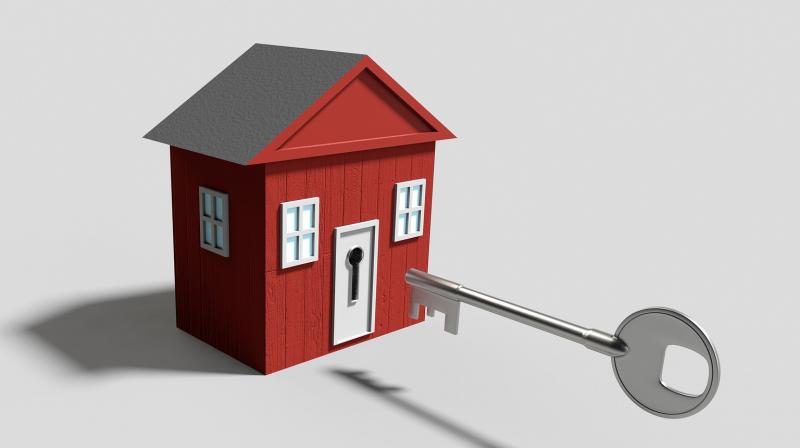How to reduce your home loan EMIs during stagnating interest rates
The last time when the RBI went for a policy rate cut was in October, 2016.

Over the last few years, we have witnessed a steady decrease in interest rates of home loans, mainly due to the RBI’s own ‘accommodative credit policy stance’ and declining bank deposit rates. However, recent global macro-economic events along with the increased domestic inflation risk have caused the RBI to change its credit policy stance from ‘accommodative’ to ‘neutral’. In simpler terms, the RBI will neither increase nor decrease the policy rates in the near future.
The last time when the RBI went for a policy rate cut was in October, 2016 when repo rates were reduced by 25 basis points. In fact, the central bank chose to increase its reverse repo rate from 5.75 per cent to 6 per cent in the last policy meeting held earlier this month, while maintaining a status quo in repo rates. According to experts, we may have seen the last of the rate cutting cycle. Though banks and NBFCs may have room for further rate cuts, any future cut is unlikely to be as steep as last year. However, home loan borrowers should not lose heart.
Here are a few ways through which existing home loan borrowers can still reduce their interest payouts:
Switch to MCLR: The Indian banking industry moved from base rate system to MCLR-based rate setting mechanism in April 2016. Those who have taken banks loans till March 31, 2016 have the option to switch their loans to the new MCLR regime.
Compared to the base rate system, MCLR is a much more transparent rate setting mechanism with a provision for fixed date for interest rate reset. This reset date has to be communicated to the borrowers before the loan sanction. Moreover, the difference between two reset dates cannot be more than 1 year. These ensure better transmission of policy rate changes to the borrowers. As a result, most banks have a difference of 25–50 bps between their MCLR and base rates. For example, assume that you have an outstanding of Rs 30 lakh on your home loan from SBI, with 20 years left to pay. Currently, SBI’s base rate is 9.10 per cent per annum while its effective rate of interest under MCLR (after considering 0.65 per cent spread) is 8.65 per cent per annum. Switching to MCLR system will save you about Rs 2.07 lakh in terms of interest cost.
Opt for a home loan balance transfer: Currently, the MCLR system is applicable to loans from banks only. Housing finance companies (HFCs) and other NBFCs still follow the RPLR system, which suffers from the same problems identified with the base rate system. Many of these HFCs are still charging about 11 per cent p.a. or above on their existing home loans whereas effective rates under the MCLR system is mostly hovering in the 8.65–9.50 per cent range. Moreover, while rate changes under MCLR system takes place automatically without incurring any additional charges, many HFCs charge 0.50 per cent or above on outstanding principal to reset their interest rates.
Thus, transfer your existing home loan from a HFC to a commercial bank to avail the benefits of MCLR-based home loan rates. Visit the websites of online loan aggregators to find out the lowest home loan interest rates available to you.
Prepay your existing loans: The prevailing low interest rate regime has taken bank term deposit rates to one of its lowest levels. While the highest fixed deposit interest rate offered by major banks fall in the range of 6.90–7.50 per cent p.a., their effective interest rate on home loans starts upwards of 8.65 per cent p.a. With home loan interest rate possibly bottoming out in the near future, it makes more sense to redeem your existing low interest rate FDs and use your incremental savings in the interim to make home loan prepayment. For example, assume that you have an existing home loan outstanding of Rs 20 lakh @ 8.65 per cent p.a. with a residual tenure of 20 years. A part prepayment of Rs 5 lakh will reduce your monthly EMI from Rs 17,610 to Rs 13,208, thereby generating a net savings of Rs 4402 per month. However, do not use your emergency fund or long term investments for funding your home loan prepayment.
Hence, switching to MLCR, making a prepayment on your home loan or transferring it to another lender is likely to help you save a significant amount of money in the long run. However, before choosing either of the three options, ensure that the cost incurred is substantially lower than the savings generated. While lenders may charge conversion fee for switching to MCLR, your new lender may charge processing fee and other charges in case of a home loan balance transfer. Prepayment of your home loan may also involve certain charges.
— by Ajay Mishra, VP and Business Head – Secured Loans, Paisabazaar.com

